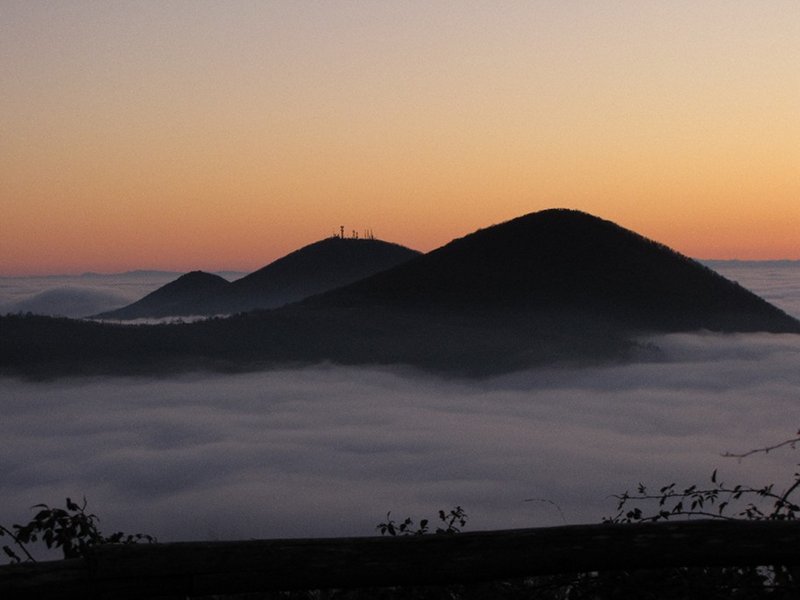Islands in the sea. That’s the Dolly Parton-
Visiting the Euganean Hills & waters
Morning mist is part of the reason the hills are likened to islands, because they rise up out of the sea of mist. Another factor – at least going by the view from my hotel room – is because of rising steam. While visiting the Colli Euganei, I was based in the conveniently-located Abano Terme, which happens to be the largest spa town in Europe.
The first morning I woke up in my hotel in Abano Terme, I was surprised by the billows of what seemed like smoke rising from between buildings and clouding the horizon. In fact, it wasn’t smoke at all, but steam. There are over 100 thermal pools here, as the faint and lingering smell of sulphur testifies.
A popular destination for golden-agers, this is unashamedly a bathrobe town. And between the peeking bare flesh, robes, steam and theatrical Italian expressions, you get a taste of what life might have been like in bygone times for the wealthy Venetians, who have been holidaying here since the Middle Ages.
For centuries, the Euganean Hills were the pleasure destination for Venetians, who came to escape the heat of the city and enjoy thermal pool parties in the hills. Casanova was apparently a regular. Grape growing and winemaking were already in full swing – historians believe that wine has been made in the Euganean Hills since prehistoric times.

The stark reminder of nature, invading the landscape and your olfactory organ, isn’t just apparent when you visit the thermal pools – it’s also right there when you go to the vineyards. There are over 100 volcanic hills within a 200 square kilometre area and vineyards are planted on and around this unique landscape. Colli Euganei is one of the few volcanic wine regions in Italy (and one of relatively few in the world), which is arguably what makes the wines of Colli Euganei so unique.
Terroir of Colli Euganei
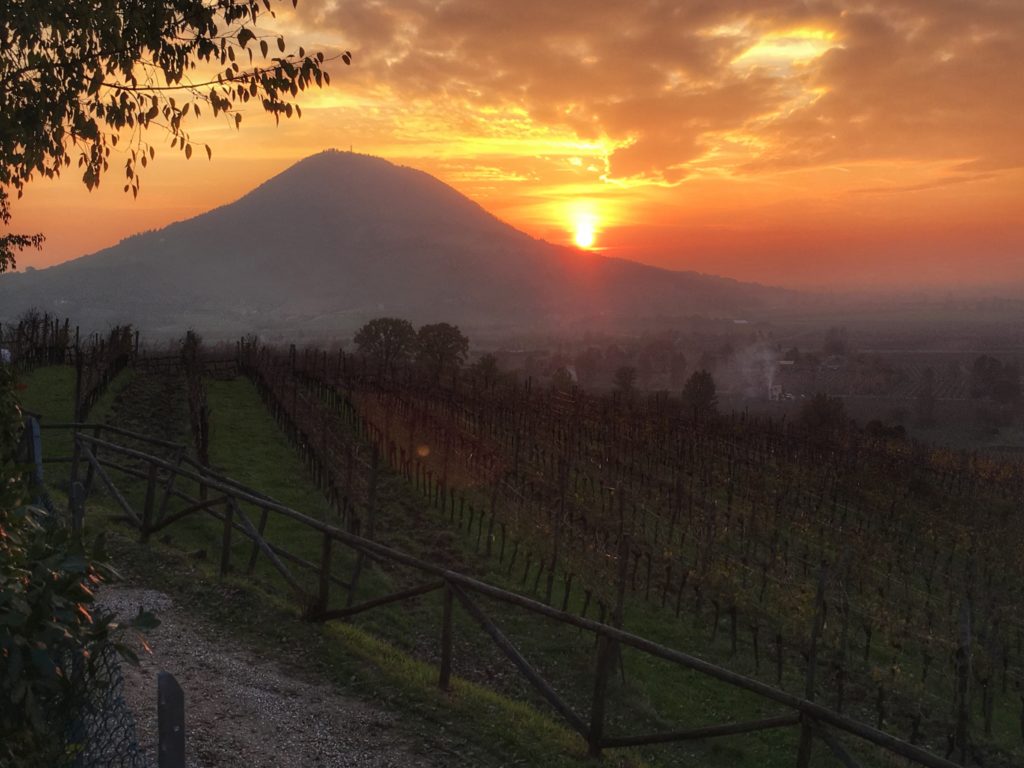
The story of the Euganei Hills starts underwater, more than 45 million years ago. Back then, the region was a seabed. Corpses of sea life and crustaceans became encrusted on the seabed, forming what would later become an important layer of calcareous soils and limestone.
Some 35 million years ago volcanic activity and lava flows underwater created a new layer of land – of volcanic origin – which, when the sea retreated, left the unusual formation of conical hills (or “islands”). The result is a complex and mixed terrain of limestone, clay and volcanic soils. There are 3000 hectares of vineyards planted in Colli Euganei and the terrain can be dramatically diverse within a small area.
“Within 90 metres I have three totally different soil types,” explains Franco Zanovello (of Cà Lustra), talking about one of his vineyards in the Colli Euganei. “I have to plant three different rootstocks for these soils – all within the space of 90 metres!”

The other variable in the Euganean Hills is whether the vineyard is on a flat plain or on the slopes of the volcanic outcrops. If it is on the slopes, then the vineyard’s exposure becomes important (whether it faces more sun to the south or hides away from the sun by facing north).
The different mesoclimates between the hillsides means that there’s a rich diversity of flora that can grow here. With more than 1,400 species of plants in the Euganean Hills, over a fifth of all of Italy’s plant varieties are grown here. This great diversity also extends to grape varieties. In the Euganean Hills you can find varieties ranging from Riesling to Cabernet Sauvignon. Winemakers have quite the palette to play with.
Bordeaux varieties in Italy
Although there are hundreds of different varieties grown in Colli Euganei, the most notable are the Bordeaux red varieties – which makes the Euganean Hills an oddity in Italy. While Italy has one of the most diverse spreads of native varieties (over 2000 native varieties in fact), Colli Euganei has been known for its Bordeaux varieties for some 150 years.
In 1868, Count Corinaldi of Lispida brought vines from France, Austria and Germany. Riesling, Traminer, Gamay and Furmint were all planted, as were the Bordeaux varieties of Cabernet Sauvignon, Merlot, Cabernet Franc and Carmenère. It was the first time many of these varieties had ever been planted in Italy. All of them grew well but success in the 1900 Paris Exposition with a Cabernet blend set the region’s future in stone. Colli Euganei became Italy’s wine region for Bordeaux-style blends.
Some say the Bordeaux varieties do so well because the Euganean Hills are approximately 60km from the sea, similar to the vineyards in Bordeaux. But the maritime influence here is entirely different (the warm Adriatic versus the cold Atlantic). It is likely they do so well because of the free-draining soils, abundant sunshine and warm temperatures. Ripening is rarely an issue in the Euganean Hills and Colli Euganei Rosso wines can sometimes top 15% alcohol.
Merlot is the most planted of the red varieties (it takes up about 20% of the region’s plantings), followed by what is grouped together as the Cabernet varieties. Cabernet Sauvignon is one – and often made as a single-variety wine – and Cabernet Franc and Carmenère are also common here (and have historically been confused for one another). The oldest vineyards in the region are in fact field blends of these major varieties.
What makes Colli Euganei red wines stand out is their mineral edge. “The volcanic soils gives us wines with a more mineral note, which are vertical in style,” explains Filippo Gamba, winemaker and owner of Alla Costiera. He makes field blends from single vineyards planted in different types of soil. “The soils with more of a limestone component make wines that are much more open and fruit-driven. I think the terroir has more importance than the variety in many cases.”
This mineral edge contributed by the volcanic soils doesn’t just apply to reds though. Their Yellow Muscat (ubiquitous in Italy) has a particular scent, which some say stems from the volcanic soils. “Moscato Giallo [Yellow Muscat] grown on our volcanic soils and with our climate has this particular orange blossom scent, it isn’t like Moscato Giallo from anyone else,” says Alessandro Facchin, from Ca’del Colle. “The soils also give our white wines higher acidity, even in the sweet wines.”
Orange blossom is undeniably the dominant character – whether in the dry white wines, the sparkling sweet wines or the intensely sweet passito versions. Whichever way it is vinified, the Moscato Giallo is Colli Euganei’s only DOCG – Fior d’Arancio (named after the orange blossom note). There are 230 hectares of it grown in the Euganean Hills and it makes a very distinctive wine.
The other white wines of the region share the volcanic character of the area (just like the reds), showing texture, palate weight, acidity and structure. All of these attributes help to build a wine – be it white or red, sparkling or sweet – making it not only capable of ageing but quite distinctive.
Colli Euganei has just 3,000 hectares of vines set within the ginormous region of Veneto (which consists of 90,000 hectares of vines). Colli Euganei doesn’t just have a landscape of islands in the sea. Its distinctive wines too are a true island in the sea of Veneto and certainly warrant recognition.
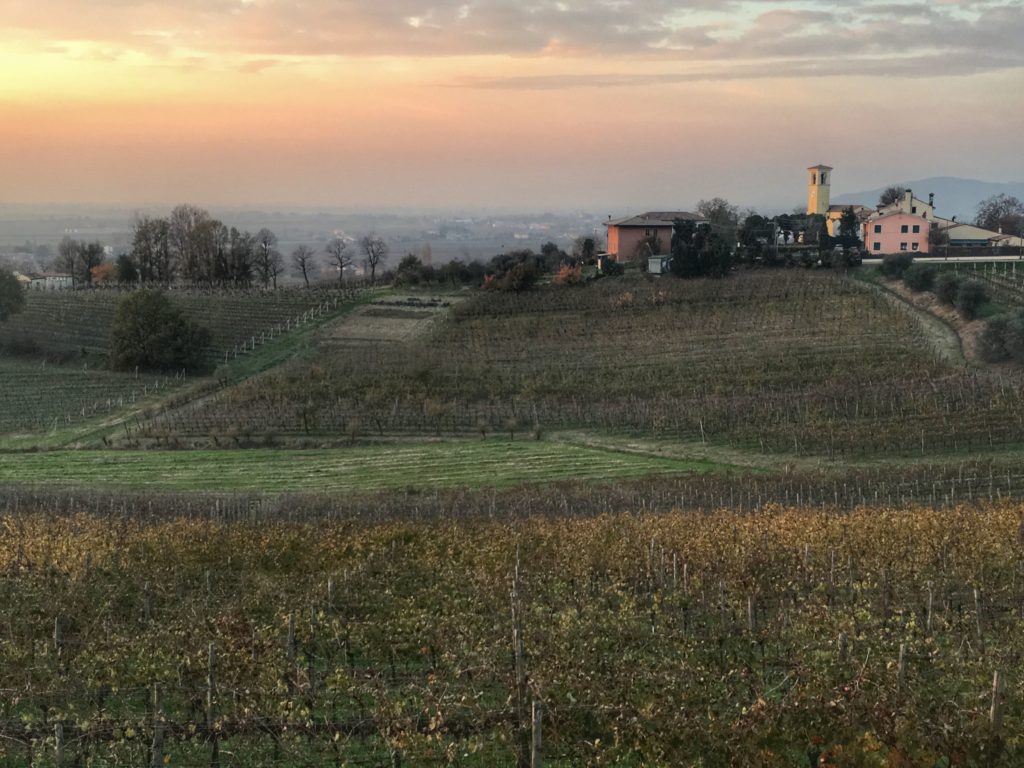
Wines to try from Colli Euganei
Wines with a 🌟 are considered Outstanding (or 95+ points, or 18.5+)
Alla Costiera
One of my favourite producers in Colli Euganei, Alla Costiera is the boutique natural wine production of young gun winemaker Filippo Gamba. Working with old vine field blends and some single varieties, Alla Costiera is biodynamic and organic.

Trachite Bianco 2017
A rich and complex old vine field blend of Moscato Bianco, Pinella and Garganega on volcanic soils. Aromatic on the nose with grip and tension in the palate.
Terreni Bianchi 2017
Coming from limestone soils, this wine is more about minerality than acidity. With a chalky texture and freshness on the finish, this white is a blend of Garganega, Marzemina Bianca and Moscato.
Carmenère 2017
Carmenère on limestone soils, this is a rich red wine with deep berry, spice and floral notes. A lovely length and freshness on the finish.
Gerardo 2016
A typical Colli Euganei blend of Merlot and Carmenère, this is a fruit-driven and smooth wine. The vines are on limestone soils and the wine has buckets of fruit aromas and an elegant, long finish.
Trachite Rosso 2017 🌟
My absolute favourite of a great collection of wines – this blend of Merlot and Cabernet Sauvignon is on volcanic soils and is an energetic red wine. A vibrancy of fruit and a long finish sizzling with tension.
Watch my interview with Filippo Gamba at his winery.
Cà Lustra Zanovello
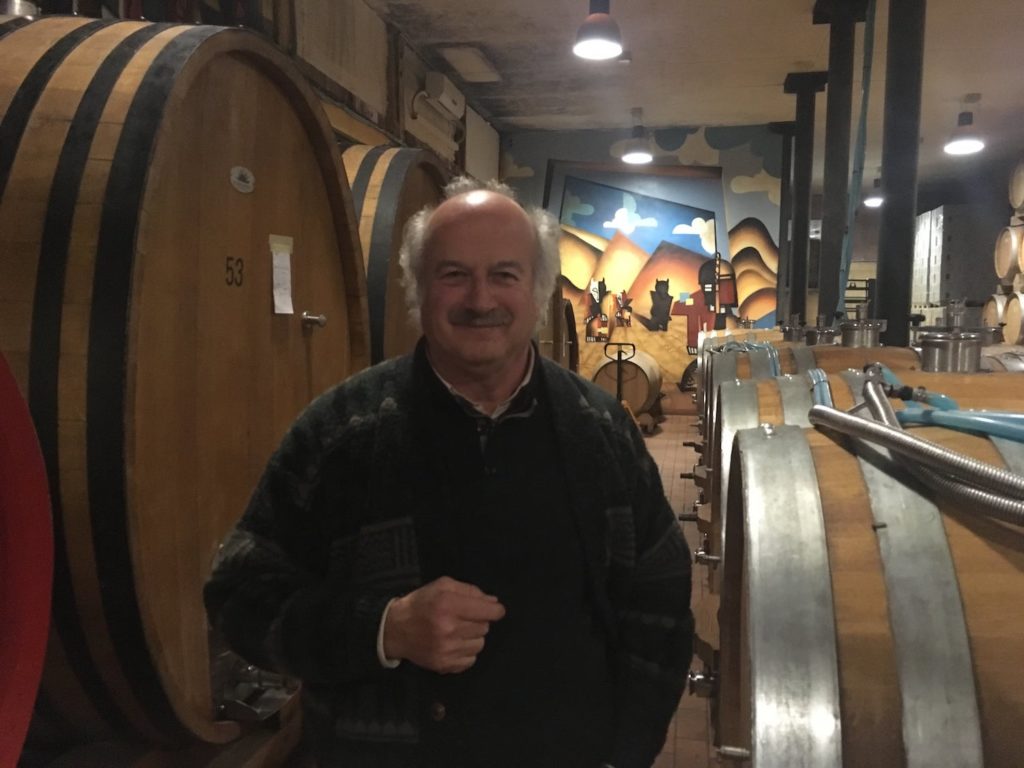
Another of my favourites, Franco Zanovella started his winery 40 years ago with three hectares of vines planted outside an old summerhouse. He has now expanded to 40 hectares and follows an organic – and somewhat biodynamic – principals.
Pedevenda 2016 🌟
Manzoni Bianco from 1981 vines. There’s a nuttiness and complexity to the nose with aromas of green almond, hay and gunflint. This wine is full bodied but has a vertical acidity and a really long finish. A beautiful wine grown on volcanic soils.
‘A Cengia 2016
This blend of white
Moro Polo 2014
This is Colli Euganei Rosso old style, according to Franco. A classic blend of 50% Merlot, 33% Carmenere and 13% Cabernet Sauvignon, this wine
Sassonero 2013
This is 100% Merlot and the best-seller of the farm. It has a nice savoury note on the nose with spice and pepper. A lovely complexity and spicy tannins. A wine which ages well, retaining character for many years.
Girapoggio 2013 🌟
This is a Cabernet Sauvignon and Carmenère blend, it has wonderful dusty notes of forest floor and spice. Spicy, long and stylish.
A taste of the 2007 vintage showed great ageing potential with notes of underbrush and spice with a lively and long finish.
Watch my video interview with Franco Zanovello.
San Nazario
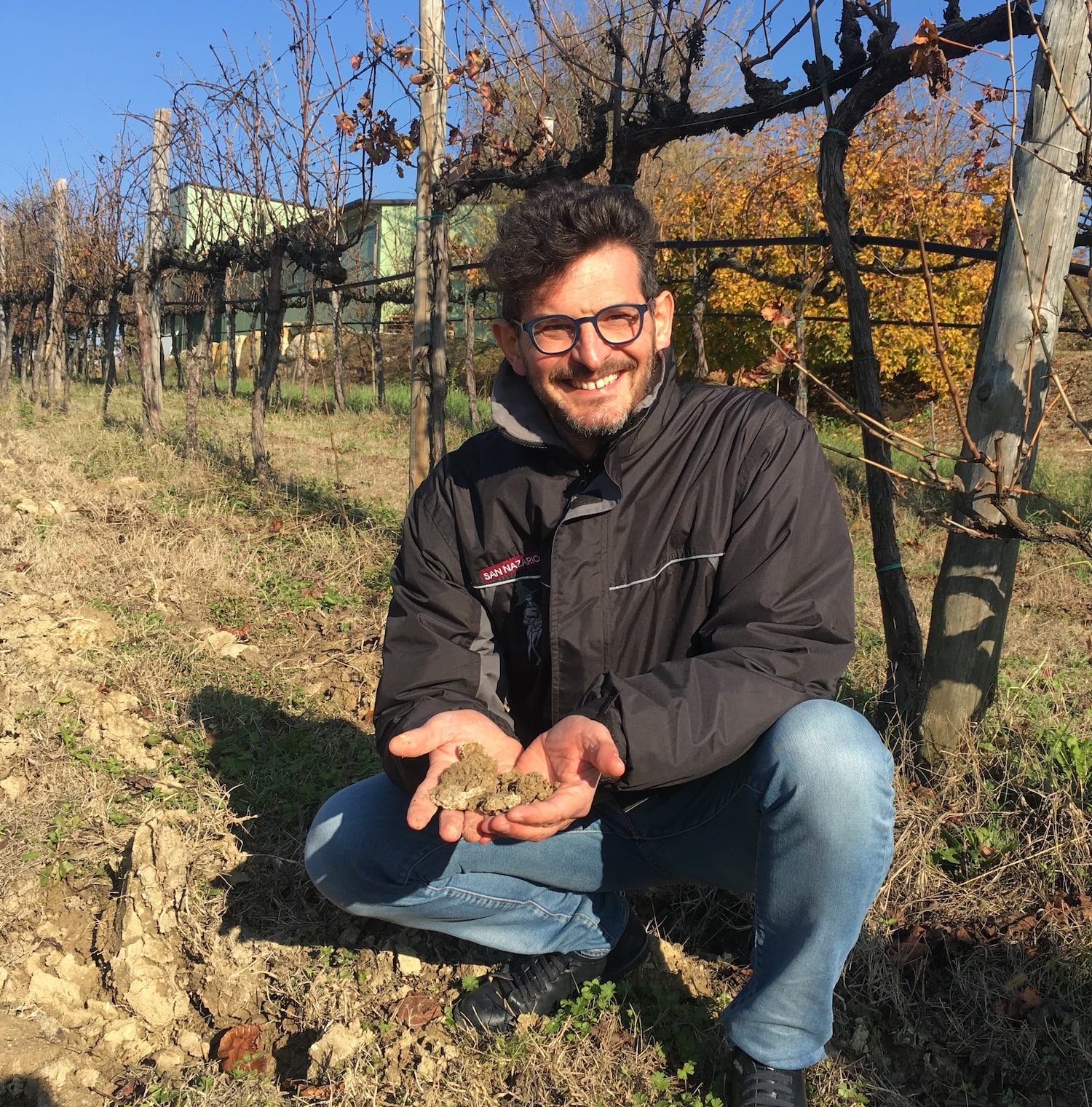
This biodynamic family winery was another favourite of mine and it focuses on making natural wines with low sulphur additions.
Serprino
Serprino is what locals consider the true Prosecco, made from 100% Glera, and this for me is an exceptional example. Vibrant and lively with some complexity coming from
Dulcemara
This is a blend of 70% Sauvignon Blanc and 30%
Cabernet
This is a dark and spicy Cabernet blend with 80% Cabernet Sauvignon and 20% Cabernet Franc. Lovely length and texture with an appealing graphite note on the finish.
Brolo
Brolo is a Venetian word for a secret garden, and this wine is a 60% Merlot, 30% Cabernet Sauvignon and 10% Cabernet Franc blend.
Vignale di Cecilia

Paolo Brunello swapped his cello for his grandfather’s vineyard in 2000 when he came home after many years as a musician on the road. He is a natural wine producer who also practices biodynamics in the vineyard.
Poldo 2017
This Garganega, Tai and Moscato blend is sold in a litre bottle, making it ‘ideal for a lunch for two’ says Paolo. Dried flowers, apricot and stone fruits invade the nose, while freshness and structure lead the palate.
Còvolo 2016
This Merlot and Cabernet Sauvignon blend is crunchy and fresh with intense notes of red berries and some spice.
Watch my interview with Paolo Brunello.
Ca’ del Colle
Third generation wine family in the northwest of Colli Euganei making a wide range of varieties (as still, sparkling and sweet wines) from their 20 hectares vineyard.
Raboso Frizzante
This is a charming sparkling red wine – deep black cherry in colour and similar in the nose. Filled with notes of red berries, roses and cherry jelly. Tannins lightly tickle in the palate along with the light foamy bubbles, leaving you with a fresh and bright finish.
Colli Euganei Rosso
This Merlot (70%) and Cabernet Sauvignon (30%) blend has an appealing nose of red fruit, herbal spice and gunflint. It is fresh, bright and long.
Quota 101
This family-owned winery is named after its position in altitude (101 metres above sea-level). They have two different estates and have an organic and ‘biodynamic-friendly’ production with a good range of wines.
La Gobbetta 2017
This Garganega is made in the Col Fundo method, cloudy and unfiltered with rich aromatics of lemon sherbert, fuzzy peach and red apple.
Quota 101 Dry Fior d’Arancio DOCG 2017
This is an exuberant dry yellow muscat with bright notes of orange blossom,
Quota 101 Fior d’Arancio DOCG 2017
This sparkling yellow muscat has distinctive notes of elderflower, Mediterranean herbs and essence of orange flower with a slightly more herbal finish and freshness complimented with creamier bubbles.
Watch my video interview with Quota 101’s Andrea and Roberta.
Vigne al Colle

Martino is a third generation winemaker and he has a ten hectare estate where he works with organic practices. His philosophy is focused on returning to the same techniques his grandfather used and he makes low-sulphur, artisanal wines.
Vigne al Colle Serprino Millesimato
This sparkling wine is made from 100% Serprino (Glera) with a long fermentation. The result is an appealing, precise and crisp sparkling wine with creamy mousse. Bright orchard fruit and mineral notes, and a delicious way to start a meal.
Vigne al Colle La Prima Volta Surlies
This is a cloudy Serprino made of 100% Glera grapes with an unfiltered bottle fermentation. It is cloudy in appearance with great structure and richness in the palate. Notes of blossom, white pear and apple.
Baccari, Colli Euganei Bianco 2017
This blend has Sauvignon Blanc, Tai, Garganega and some Manzoni which gives it an interesting complex arom. Driven by mineral notes with a linear acidity and finish, this is delicious and crisp – perfect for baccari as the name suggests.
Vigne al Colle Poggio Alle Setole Merlot 2009
It was a pleasure to taste this older vintage of Merlot which showed dark fruit framed by smooth and fine tannins. It has aged really well and still has vibrancy and freshness on the finish.
Sengiari
This winery has a beautiful restaurant and hotel attached. Surrounded by sloped vineyards, it makes for a handsome setting and an ideal place to try their portfolio of wines over lunch or dinner. It is now the fourth generation of the Dainese family that run the business. My top wine over dinner was:
This Cabernet Sauvignon and Merlot blend
Vigna Roda
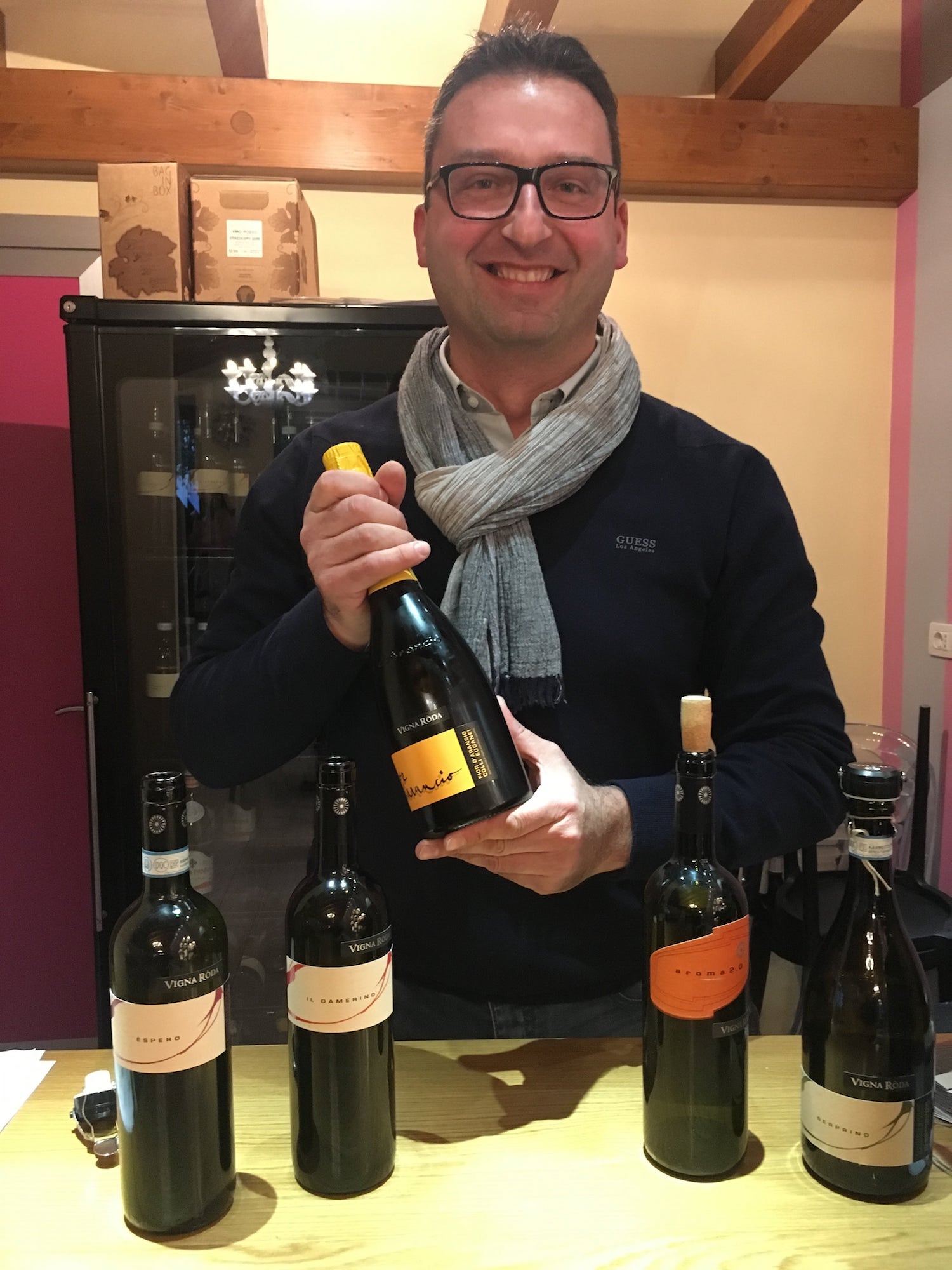
This family winery was started in 1960 and today is run by the second generation of the energetic Strazzacappa family. They have a smart portfolio with wines from all the major varieties in the region. Their 20 hectare vineyard is split almost equally between white and red varieties.
Serprino 2017
This is a crisp, clean and fresh sparkling wine with a long, dry finish. It shows you the more serious side of Glera and is nicely quaffable.
Espero 2016
Led by Cabernet Sauvignon with 10% Carmenère, this is an attractive blend abundant with red fruit and floral notes. It has a long, fresh finish.
Fior d’Arancio Passito 2013
This bottle-aged Passito has waxy notes and just a hint of petrol. Rich apricot and orange blossom give away its variety, and a bright acidity cuts through the lusciousness. Great stuff.
La Mincana
This family estate has been in the Dal Martello family since 1900. They have 60 hectares in the Venetian hills, 19 of which are planted, and my highlight wine from this producer was:
Frigus Zero
A new traditional method sparkling wine made as a blanc de noir from the rare Raboso grape (with 15% Chardonnay). It has 26 months on the lees and has an interesting nose of apricot, roses and strawberries. Extremely aromatic with high acidity and a dry finish.
Il Mottolo
Sergio Fortin moved from dentistry to sommelierie and became a vigneron in 2003 with his friend Roberto dalla Libera. They farm 8 hectares of organic vineyards and make a handful of small-production wines. My highlight was:
Vigna Mare’ Cabernet 2016
This Cabernet Sauvignon, Cabernet Franc and Carmenère blend
Cantina Colli Euganei
This is the Euganean hills only co-op, making wine since 1940. It brings together 680 growers and covers around 700 hectares – which gives you an idea of the small average vineyard size in the region. The Cantina produces half of Colli Euganei’s DOC wines and is the most widely distributed Colli Euganei brand. It is a good benchmark for the Euganean hills and the wines – at very reasonable prices – show that there is a good quality level across the board. The most interesting I tasted
Pinello DOC
An interesting variety to taste as a single-variety, this dry Pinello white wine is very fruity in the palate with a spicy finish. It has a refreshing, high acidity.
Marco Sambin
Founded in 2002, this boutique winery is the passion project of biodynamic producer Marco Sambin. His wines are rich and concentrated, made for ageing. My highlight was:
La
A Cabernet Franc, Cabernet Sauvignon and Merlot blend, this wine has bright fruit and a full flavour and aromatic finish.
Cristofanon
The Cristofanon family have been growing vines in the Euganean Hills for over five centuries. Today the family vineyard and winery is run by brother and sister Paola and Raffaele.
Rosso Riserva 2015
Their flagship red blend has 70% Merlot with 30% Cabernet Sauvignon which spends two years in
Borin
The Borin family have 30 hectares of vines and their focus is on making polished wines with bright fruit expression. A tropical Sauvignon Blanc and rich, red blend are among their portfolio but my pick of the tasting was:
Fior d’Arancio 2017
This dry yellow muscat has flamboyant notes of jasmine, orange flower and blossom. Fresh, flirty and lively.
Read more on the Colli Euganei wine region:
- Guide to Colli Euganei wines: Fast Facts & Terroir Essentials
- Fior d’Arancio – a case for terroir Muscat?
- Video interview with Paolo Brunello, Vignale di Cecilia
- Video interview with Filippo Gamba, Alla Costiera
- Video interview with Franco Zanovello, Ca Lustra
- Video interview with Andrea and Roberta, Quota 101
- Video interview with Alonso Soranzo, Monteforche

